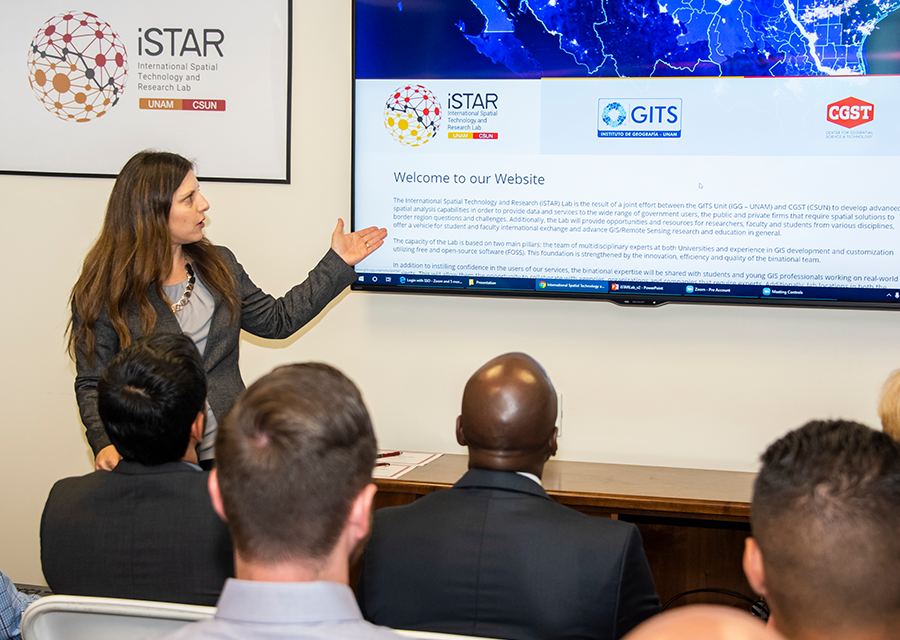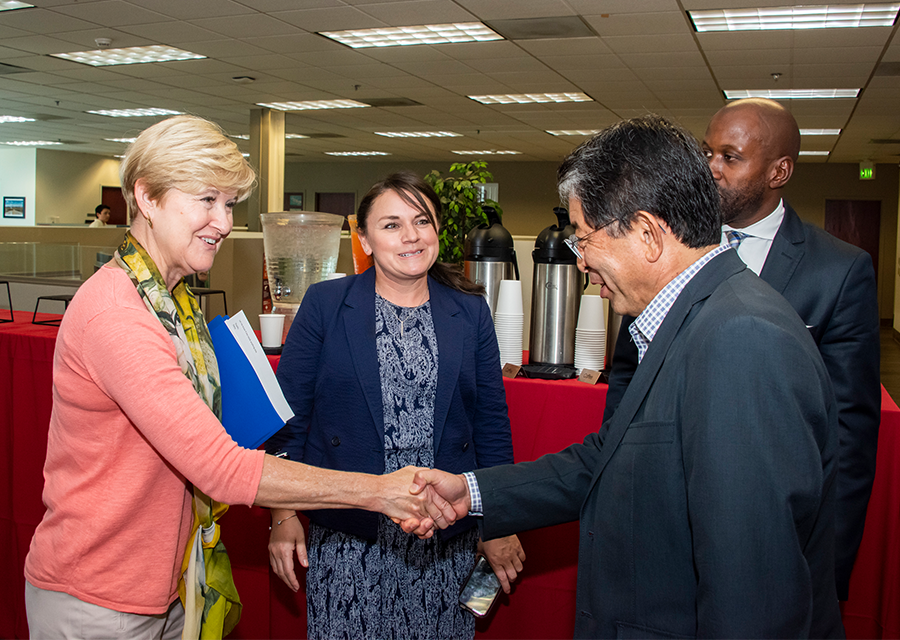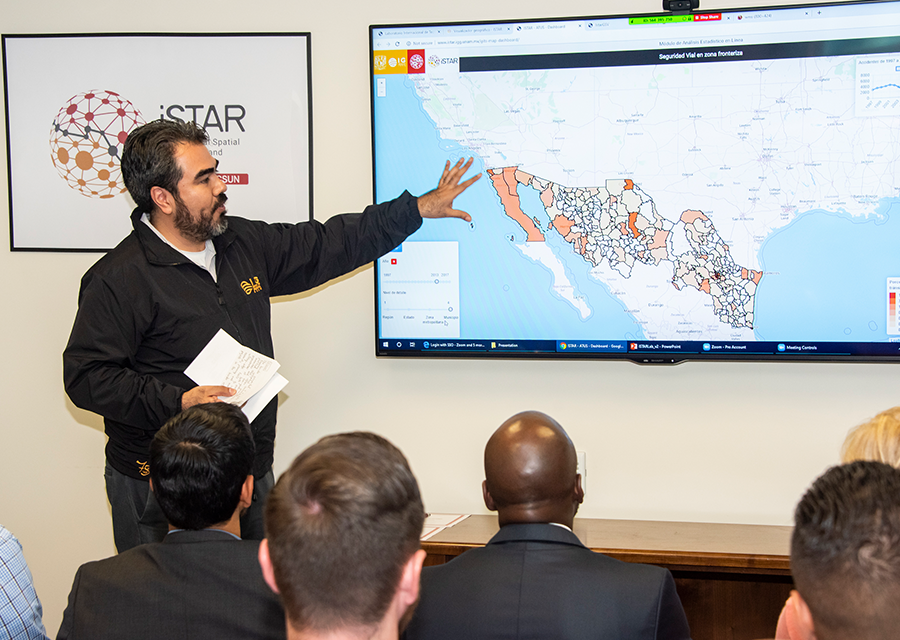New Geospatial Research Lab Promotes International Collaboration Between CSUN and Universidad Nacional Autónoma de México
About 15 million people inhabit the U.S./Mexico border region — the area officials designate 62.5 miles to the north and the south of the international boundary — and many live with a shortage of professional healthcare services and restricted water supply, according to the U.S. Department of Health and Human Services.
Partners since 2014, CSUN and Universidad Nacional Autónoma de México (UNAM) hope to conduct collaborative geospatial research to improve lives in this region. Geospatial research involves collecting and analyzing geographic data associated with a specific location. Examples include studies of a region’s access to clean water, vulnerability to the spread of disease, likelihood of experiencing an earthquake and more.
CSUN’s Center for Geospatial Science and Technology began a joint effort with UNAM’s Geotechnology in Infrastructure, Transportation and Sustainability unit in 2017, to create labs at each campus to encourage international collaborations between the U.S. and Mexico in conducting geospatial studies.
Their efforts bore fruit this month with a brand-new research lab at CSUN, dubbed the International Spatial Technology and Research (iSTAR) Lab. CSUN and UNAM officials celebrated the lab’s grand opening Sept. 18 in its new home: the Center for Geospatial Science and Technology hub on the second floor of the Campus Store Complex. The space is the CSUN counterpart to UNAM’s iSTAR Lab, which opened in 2018.
CSUN’s new iSTAR Lab space includes five high-powered computer workstations with industry-standard geospatial and graphics software, a secure server, large-format plotters and a supercomputer — a computer that runs on technology exponentially faster than a standard home computer, to enable quick computations and data processing. It also has a conference space that, after further development with an online reservation system, can be reserved by geospatial researchers, faculty and students from CSUN and UNAM.
“[The iSTAR Lab] will facilitate and encourage interactions and project development between our two centers,” said Danielle Bram, Center for Geospatial Science and Technology director. “It provides the support and capacity for our teams to work together, and provides opportunities and resources for faculty, researchers and students from numerous disciplines.
“We want this lab not just to be used by our two centers,” Bram added, “but to be used by the larger communities — researchers and students — at UNAM and CSUN. We also want to offer a vehicle for student and faculty international exchange.”
iSTAR’s website, viewable in English and Spanish, will host iSTAR’s keystone project, the U.S./Mexico Border Geoportal. The web-based Geoportal features an interactive map of the border region, as well as its surrounding areas in U.S. and Mexican territories, which offer data on “geothemes” such as demographics and water resources. The Geoportal also can summarize data into graphs and charts.
The technology offers governments, non-governmental organizations, researchers and private institutions a way to store, share and visualize geospatial data covering the border region. This data will help support research, planning efforts and management of projects in the border region, Bram said.
By offering open-sourced, standardized data in a bilingual interface, the Geoportal also helps CSUN and UNAM meet one of their objectives — making data more accessible to the public, Bram said.
“The portal is a key component to establish a sustainable model of geospatial research,” said Héctor Daniel Reséndiz López, technical coordinator of UNAM’s Geotechnology in Infrastructure, Transportation and Sustainability unit. He said the technology enables researchers from other institutes and other disciplines to publish and share their findings. “The objective is to get more people working with us,” he said.
CSUN and UNAM first forged their partnership in 2014 with a Los Angeles-based center that focuses on scholarship and research on Mexico and Latin America. For the past five years, the two universities have collaborated on a variety of projects, including a Latin American Film Festival and a UNAM Film Workshop.
“This has been a long time coming, and I’m happy to have inherited this from the work that was done before,” said Yan Searcy, who became dean of CSUN’s College of Social and Behavioral Sciences in 2018. “This relationship is intercambio — that means ‘exchange’ — and these exchanges, these bridges, are quite important today.”
At the grand opening of the lab, representatives of UNAM joined Searcy and CSUN Provost and Vice President for Academic Affairs Mary Beth Walker in signing the official documents to seal their universities’ commitment to the collaboration.
“I have a lot of faith that [iSTAR], a very sound basis for a collaboration, will be long lasting,” Walker said. “It will be very valuable to our students and our faculty, and I really hope to [UNAM’s] students and faculty as well.”
“It takes a lot of time and effort to get different institutions, different agencies to work together and produce tangible outcomes that are valuable, and many of those collaborations, unfortunately, have not been all that successful,” Bram added. “But we’ve been successful, very successful so far. And that’s what’s so exciting.”






 experience
experience